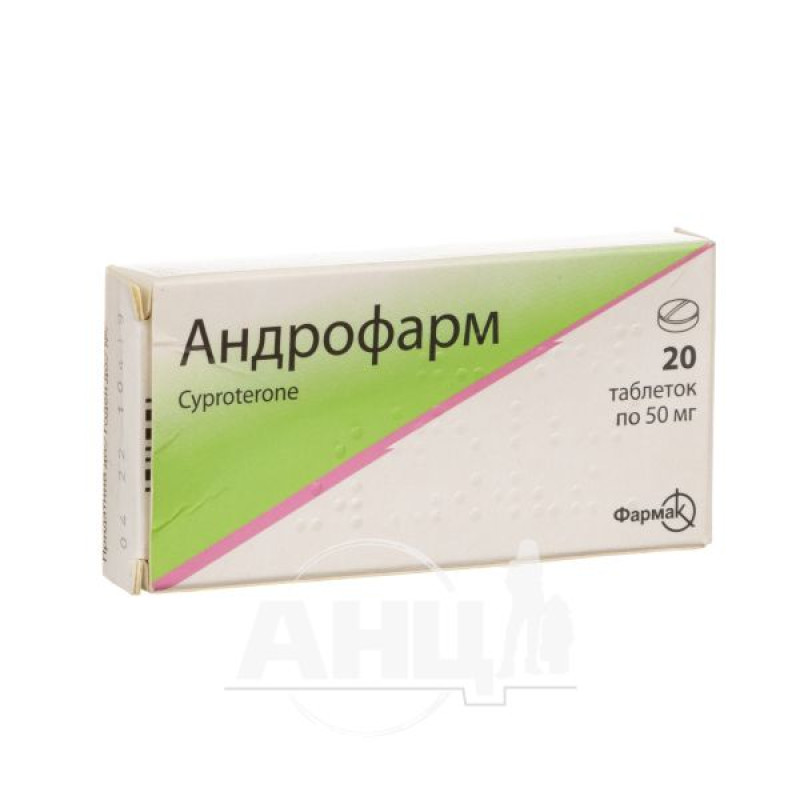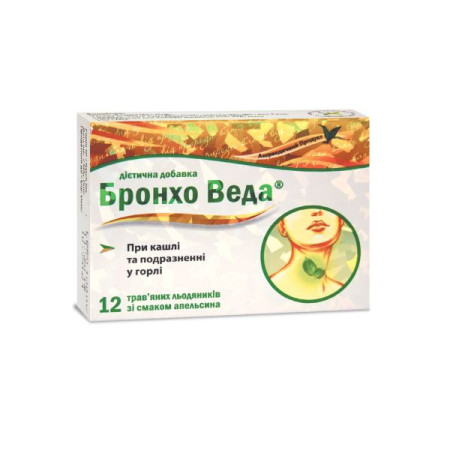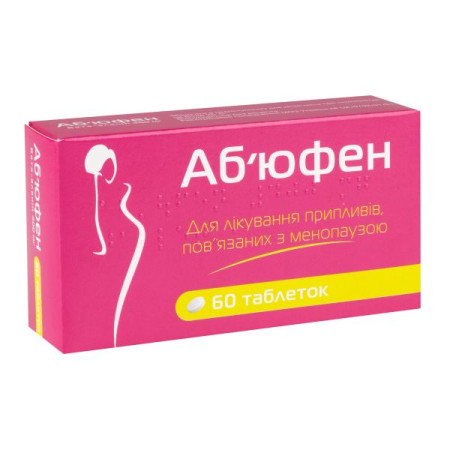Andropharm tablets 50 mg No. 20

Pharmacological properties
Pharmacodynamics. Andropharm is a steroidal antiandrogenic drug with a dual mechanism of action. A competitive antagonist of androgen receptors, it blocks the biological action of testosterone and other androgens in target cells. In addition, cyproterone acetate has gestagenic and antigonadotropic activity, which leads to a decrease in androgen secretion and enhances antiandrogenic action. Due to this, in men, the drug inhibits the growth of prostate carcinoma stimulated by endogenous androgens and even leads to tumor regression and its metastases, in women it reduces the severity of hirsutism and other manifestations of hyperandrogenic pathology.
Pharmacokinetics. After oral administration, Andropharm is completely absorbed in the intestine. After administration of 50 mg of cyproterone acetate, C max in blood plasma is approximately 140 ng / ml and persists for approximately 3 hours. Further, the concentration of the substance in the blood serum decreases within 24-120 hours, the final T ½ is 43.9 ± 12.8 hours. The clearance of cyproterone acetate from blood serum is 3.5 ± 1.5 ml / min / kg.
After i / m administration of cyproterone acetate is slowly released from the oil solution. The bioavailability of the drug is 100%. C max of cyproterone acetate in blood plasma is reached after 2-3 days. It is excreted in a monophasic manner with a T ½ of about 4 days. After 4 injections, the level of cyproterone acetate in blood plasma stabilizes. After this, the level of the hormone in blood serum decreases with a final T ½ of 4 ± 1.1 days. The total clearance of cyproterone acetate from blood serum is 2.8 ± 1.4 ml / min / kg.
Cyproterone acetate is almost completely bound to plasma albumin. Approximately 3.5-4% of the total steroid level remains in the free state. Since protein binding is nonspecific, changes in the level of sex steroid binding globulin do not affect the pharmacokinetics of cyproterone acetate.
The absolute bioavailability of cyproterone acetate is almost complete (88% of the administered dose).
Metabolized by various pathways, including hydroxylation and conjugation. The major metabolite in plasma is the 15b-hydroxy derivative. Phase I metabolism is catalyzed primarily by the cytochrome P450 enzyme CYP 3A4.
A small part of the dose is excreted unchanged in the bile. The majority of the substance is excreted as metabolites in the urine and bile in a ratio of 3: 7. The half-life of metabolites from blood plasma is 1.7 days.
Indication
Tablets 50 mg
The drug is intended for men. To reduce sexual desire in case of pathological deviations in the sexual sphere.
For the treatment of inoperable prostate cancer.
Prescribing the drug to women. Pronounced symptoms of androgenization, such as severe forms of hirsutism, severe androgenetic alopecia, often accompanied by severe forms of acne and/or seborrhea.
Tablets 100 mg
For the treatment of inoperable prostate cancer.
Application
For oral use. Tablets should be taken after meals with a small amount of liquid.
The maximum daily dose is 300 mg.
To reduce sexual desire in case of pathological deviations in the sexual sphere in men.
The initial dose is 50 mg 2 times a day. If necessary, the daily dose can be increased to 200 mg (100 mg 2 times a day) or for a short period to 300 mg (100 mg 3 times a day). After achieving a satisfactory result of treatment, the therapeutic effect should be maintained with the help of a minimum dose. In most cases, taking 25 mg 2 times a day (50 mg/day) is sufficient. The maintenance dose or canceling the drug should be prescribed gradually. In this case, the daily dose is reduced by 50 mg or, better, by 25 mg at intervals of several weeks. To stabilize the therapeutic effect, it is necessary to take the drug for a long time, if possible - with simultaneous psychotherapy.
For the treatment of inoperable prostate cancer. Take 100 mg of the drug 2-3 times a day (daily dose - 200-300 mg).
If the condition improves or the disease goes into remission, the prescribed dose of the drug should not be reduced or treatment interrupted.
In order to prevent an increase in the level of male sex hormones at the beginning of treatment with gonadotropin-RG agonists: first, monotherapy with the drug Andropharm is carried out: 100 mg 2 times a day (daily dose - 200 mg) for 5-7 days. After that, for 3-4 weeks - 100 mg of the drug Andropharm 2 times a day (daily dose - 200 mg) in combination with a gonadotropin-RG agonist in the recommended dose.
To eliminate hot flashes in patients during treatment with gonadotropin-RH analogues or after orchiectomy: 50-150 mg of Andropharm per day with an increase in dose, if necessary - up to 100 mg 3 times a day (daily dose - 300 mg).
Prescribing the drug to women. Women of reproductive age. The use of the drug Andropharm is contraindicated during pregnancy, so pregnancy should be excluded before starting treatment.
From the 1st to the 10th day of the cycle (i.e. for 10 days) 100 mg of the drug is taken daily. In addition, to stabilize the menstrual cycle and provide the necessary contraceptive protection, women take a drug containing a combination of progestogen and estrogen, 1 tablet per day from the 1st to the 21st day of the cycle.
With combined cyclic therapy, it is recommended to take the drugs every day at the same time.
After the 21st day of use of the drug, a 7-day break in treatment is prescribed, during which withdrawal bleeding occurs. Exactly 4 weeks after the start of the first course of treatment, that is, on the same day of the week, a new cycle of combination therapy begins, regardless of whether bleeding has stopped or not.
As the patient's condition improves, the daily dose of Andropharm taken during the first 10 days of combination therapy with a drug containing a combination of progestogen and estrogen may be reduced to 50 mg or 25 mg. It may be sufficient to continue taking only the drug containing a combination of progestogen and estrogen.
Absence of withdrawal bleeding. If there is no withdrawal bleeding during the drug-free interval, treatment should be discontinued and pregnancy should be ruled out before resuming therapy.
Missed tablets. If the delay in taking a tablet of a combined progestogen-estrogen tablet is more than 12 hours, contraceptive protection in this cycle may be reduced. In this case, attention should be paid to the relevant sections of the instructions for medical use of the combined progestogen-estrogen tablet.
If you miss a dose of Andropharm, its therapeutic efficacy may be reduced and bleeding may occur. It is not necessary to take a double dose to make up for a missed dose. The drug is resumed at the usual time in combination with a drug containing a combination of progestogen and estrogen.
Postmenopausal women or after hysterectomy. Postmenopausal women or after hysterectomy can receive monotherapy with Andropharm. The average daily dose of the drug, depending on the severity of the disease, is from 50 mg to 25 mg 1 time per day for 21 days. After that, a 7-day break in treatment is provided.
Elderly patients: There are no data on the need for dose adjustment in elderly patients.
Patients with hepatic insufficiency. The use of the drug is contraindicated in patients with liver disease (until liver function parameters return to normal).
Patients with renal impairment: There are no data to suggest that dosage adjustment is necessary for patients with renal impairment.
Contraindication
General contraindications: hypersensitivity to any of the components of the drug; liver disease; Dubin-Johnson syndrome, Rotor syndrome; liver tumors, including a history (only if the tumor is not due to metastases of prostate cancer); severe general condition (if it is not associated with inoperable prostate cancer); severe chronic depression; current thromboembolic conditions; current or history of meningioma.
When used to reduce sexual desire in pathological deviations in the sexual sphere in men, in addition to the above contraindications: severe forms of diabetes with vascular complications; sickle cell anemia, thromboembolic conditions now or in history.
For women: severe diabetes with vascular complications; sickle cell anemia, current or history of thromboembolic conditions, history of jaundice or persistent itching during a previous pregnancy; history of herpes during pregnancy.
When prescribing cyclic combination therapy for the treatment of severe symptoms of androgenization, attention should be paid to the contraindications specified in the instructions for medical use of the drug containing a combination of progestogen with estrogen, which is used in combination with the drug Andropharm.
Side effects
The frequency of adverse reactions is defined as very common (≥1/10), common (≥1/100, 1/10), uncommon (≥1/1000, 1/100), rare (≥1/10,000, 1/1000) and very rare (1/10,000).
Neoplasms: very rarely - benign and malignant liver tumors; frequency unknown - benign cerebral meningiomas in connection with long-term use (for several years) of the drug in doses of 25 mg or higher.
From the side of the blood and lymphatic system: frequency unknown - anemia.
On the part of the immune system: rarely - hypersensitivity reactions.
Metabolic and nutritional disorders: often - weight gain or loss.
Mental disorders: very often - decreased libido, erectile dysfunction (these phenomena disappear after discontinuation of therapy); often - depressed mood, anxiety (temporary).
Vascular disorders: frequency unknown - thromboembolic events (causal relationship with taking the drug has not been established).
On the part of the respiratory system: often - shortness of breath.
Gastrointestinal: frequency unknown - bleeding into the abdominal cavity.
On the part of the liver: sometimes - hepatotoxicity, including jaundice, hepatitis, liver failure.
Skin and subcutaneous tissue disorders: uncommon - rash.
On the part of the reproductive system and mammary glands: often - reversible inhibition of spermatogenesis (after discontinuation of treatment, it gradually recovers within several months); often - gynecomastia (sometimes combined with increased sensitivity of the nipples to touch), which, as a rule, disappears after discontinuation of the drug.
General disorders and local reactions: often - increased fatigue, hot flashes, increased sweating.
Special instructions
In some cases, shortness of breath may occur when using Andropharm in high doses. This should be taken into account when conducting differential diagnosis. It is believed that such conditions do not require treatment.
There have been reports of anemia with cyproterone acetate. Therefore, regular blood counts should be monitored, including determination of red blood cell count, throughout the treatment period.
Patients with diabetes require careful medical supervision during treatment with Andropharm, as dose adjustments of oral antidiabetic agents or insulin may be necessary.
Thromboembolic events have been reported in patients receiving cyproterone acetate, although a relationship to the drug has not been established.
Patients with a history of arterial or venous thrombotic/thromboembolic events (e.g. deep vein thrombosis, pulmonary embolism, myocardial infarction) or cerebrovascular disease and patients with advanced tumors are at increased risk of developing thromboembolic events in the future. Particular caution should be exercised when prescribing the drug to patients with inoperable prostate cancer with a history of thromboembolic events. In each individual case, the expected benefit of treatment should be weighed against the potential risk.
Andropharm has a corticoid-like effect, therefore, throughout the entire period of treatment, it is necessary to regularly check the function of the adrenal cortex.
In patients receiving 100 mg or more of cyproterone acetate per day, cases of hepatotoxicity, including jaundice, hepatitis and hepatic failure, which in some cases resulted in death, have been reported. Most of these cases concerned the treatment of men with prostate cancer. The toxicity of the drug is dose-dependent and usually develops after several months of treatment. Liver function tests should be performed before starting treatment, regularly throughout the entire period of therapy and if any symptoms of hepatotoxicity are observed. If hepatotoxicity is confirmed, in the absence of another cause for its occurrence (for example, in the presence of metastases), the use of cyproterone acetate is recommended to be discontinued. Treatment can be continued only if the benefit of therapy outweighs the possible risk.
In isolated cases, benign and even more rarely malignant liver tumors have been reported. In some cases, intra-abdominal bleeding caused by these tumors has been life-threatening. If upper abdominal pain, liver enlargement, or signs of intra-abdominal bleeding occur during treatment with Andropharm, the possibility of a liver tumor should be considered.
Meningiomas (single or multiple) have been reported in association with long-term use (several years) of cyproterone acetate at doses of 25 mg/day or higher. If a patient receiving Androfarm is diagnosed with meningioma, treatment should be discontinued.
During treatment with Andropharm, you should not drink alcohol.
Prescribing the drug to women. Before starting treatment, it is necessary to conduct a general medical and gynecological examination (including examination of the mammary glands and cytological analysis of the cervix) and exclude pregnancy.
If spotting occurs during combination therapy within 3 weeks of taking the tablets, the use of the drugs should not be interrupted. However, if prolonged bleeding or repeated bleeding occurs, a gynecological examination should be performed to exclude organic disease.
When using a drug containing a combination of progestogen and estrogen in combination therapy, attention should be paid to the relevant information in the instructions for medical use of this drug.
The drug Andropharm contains lactose, therefore patients with rare hereditary diseases of galactose intolerance, Lapp lactase deficiency or glucose-galactose malabsorption should not use this drug.
Use during pregnancy and breastfeeding. Andropharm is contraindicated during pregnancy and breastfeeding.
Children. Andropharm is not prescribed before puberty is complete, as the drug may have a negative effect on the patient's growth and endocrine system. The drug is not recommended for use in children.
Ability to influence the reaction speed when driving vehicles or working with other mechanisms. During treatment with Andropharm, increased fatigue and mood changes may occur, which should be taken into account by patients whose activities are related to driving vehicles or working with other mechanisms.
When treating with Andropharm, it may be necessary to adjust the dose of oral antidiabetic drugs or insulin.
Although no clinical drug interaction studies have been conducted, since it is metabolized by the CYP 3A4 enzyme, ketoconazole, itraconazole, clotrimazole, ritonavir and other strong CYP 3A4 inhibitors are expected to inhibit the metabolism of cyproterone acetate. On the other hand, CYP 3A4 inducers such as rifampicin, phenytoin and St. John's wort-containing drugs may decrease cyproterone acetate levels.
Based on the results of an in vitro study, it can be assumed that when using high therapeutic doses of cyproterone acetate (100 mg 3 times a day), inhibition of such enzymes of the cytochrome P450 system as CYP 2C8, 2C9, 2C19, 3A4 and 2D6 is possible.
With the simultaneous use of HMG-CoA inhibitors (statins) and cyproterone acetate in high therapeutic doses, the risk of myopathy or rhabdomyolysis associated with statins may increase due to the same metabolic pathway of these substances.
Overdose
Cyproterone acetate is a practically non-toxic substance. After a single use in a dose several times higher than the therapeutic dose, no cases of acute intoxication were observed.
Storage conditions
In a place protected from light at a temperature not exceeding 25 °C.
There are no reviews for this product.
There are no reviews for this product, be the first to leave your review.
No questions about this product, be the first and ask your question.









